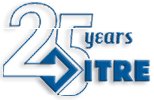Article from: www.thenewspaper.com/news/01/141.asp
2/4/2005
Raleigh, NC Red Light Camera Study
A pro-red light camera study of Raleigh, North Carolina offers more evidence that 85 percent of red light violations occur in the first second a light is red.
 You get what you pay for. The North Carolina DOT has funded a red light camera study that was designed to "increase public acceptance" of the state's photo enforcement program. The study claims red light cameras reduce all collision types, including rear end collisions -- contrary to even Insurance Institute findings and the other recent North Carolina study.
You get what you pay for. The North Carolina DOT has funded a red light camera study that was designed to "increase public acceptance" of the state's photo enforcement program. The study claims red light cameras reduce all collision types, including rear end collisions -- contrary to even Insurance Institute findings and the other recent North Carolina study.
One element of the study was the use of focus groups "to gather information of attitudes, opinions, and beliefs associated with photographic enforcement to better enhance traffic law enforcement." What better way to learn what the public thinks than by asking police, fire, traffic engineers and the city council what they think? Such groups comprised the majority studied, although there was a fraternity house focus group.
The most interesting finding is that 85 percent of red light violations occur in the first second a light is red in Raleigh. The authors raise the question of why the yellow signal time isn't increased, but quickly dismiss the idea. The claim is that if yellow is longer at problem intersections, drivers would think non-problem intersections with short yellow time actually had a long yellow time. The idea of increasing yellow across the board never crosses their mind as a non-intrusive solution to the problem.
4mb PDF file.
Article Excerpt:page 67: Another point of concern is the fact that approximately 85% of drivers are committing violations between 0.3 and one second based on the available data in the before period. Based on observations and studies conducted at ITRE by Milazzo et al., the majority of RLR related collisions do not likely occur until a couple of seconds into the red indication, provided that leftturning vehicles in the opposite direction do not have a permitted indication and are trying to “sneak” through the intersection during the all red portion of the cycle (2). If collisions are taking place two or more seconds after the onset of red (in the situation where permitted lefts are not allowed), then one may ask why agencies are providing such short grace periods or, one may also wonder why agencies do not extend yellow times to allow drivers a longer period to clear the intersection before the onset of red.
Most vendors selling automated enforcement systems allow a grace period of 0.3 seconds. This grace period on a standard 45 mph street (assuming a conservative estimation of the actual speed) allows a distance of approximately twenty feet past the stop bar. Twenty feet is approximately the length of a full size pick-up truck. This is a trivial distance/time to many drivers, which is one of the primary arguments against most current camera systems.
Source: Evaluating the Use of Red Light Running Photographic Enforcement (Institute for Transportation Research and Education, 12/1/2004)
Permanent Link for this item
Return to Front Page
 You get what you pay for. The North Carolina DOT has funded a red light camera study that was designed to "increase public acceptance" of the state's photo enforcement program. The study claims red light cameras reduce all collision types, including rear end collisions -- contrary to even Insurance Institute findings and the other recent North Carolina study.
You get what you pay for. The North Carolina DOT has funded a red light camera study that was designed to "increase public acceptance" of the state's photo enforcement program. The study claims red light cameras reduce all collision types, including rear end collisions -- contrary to even Insurance Institute findings and the other recent North Carolina study.